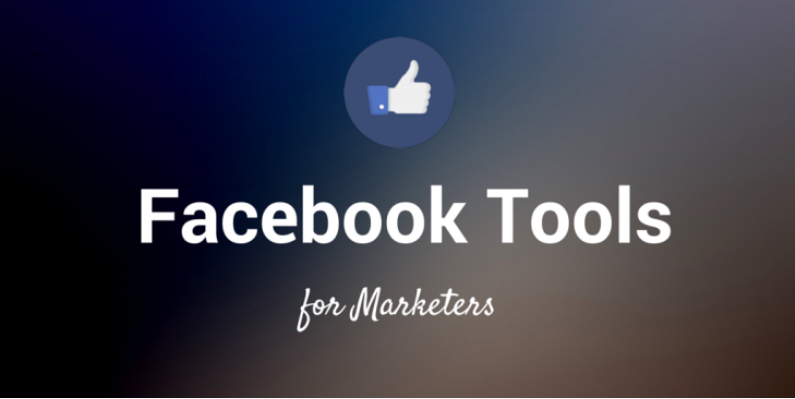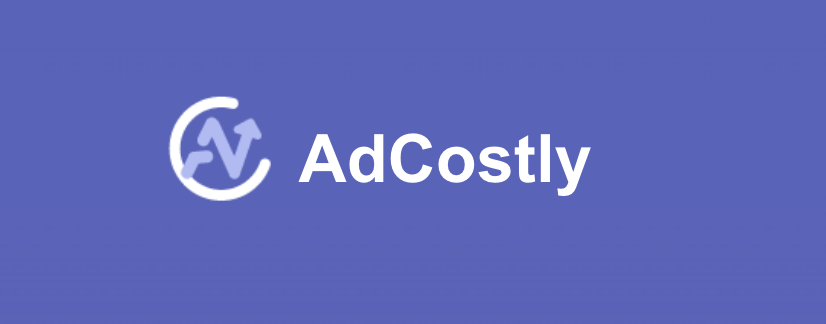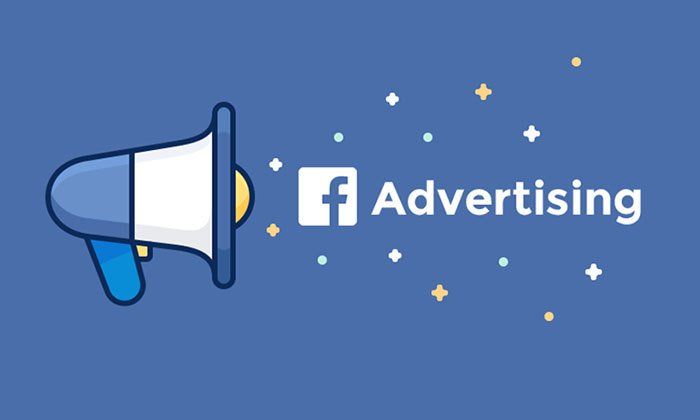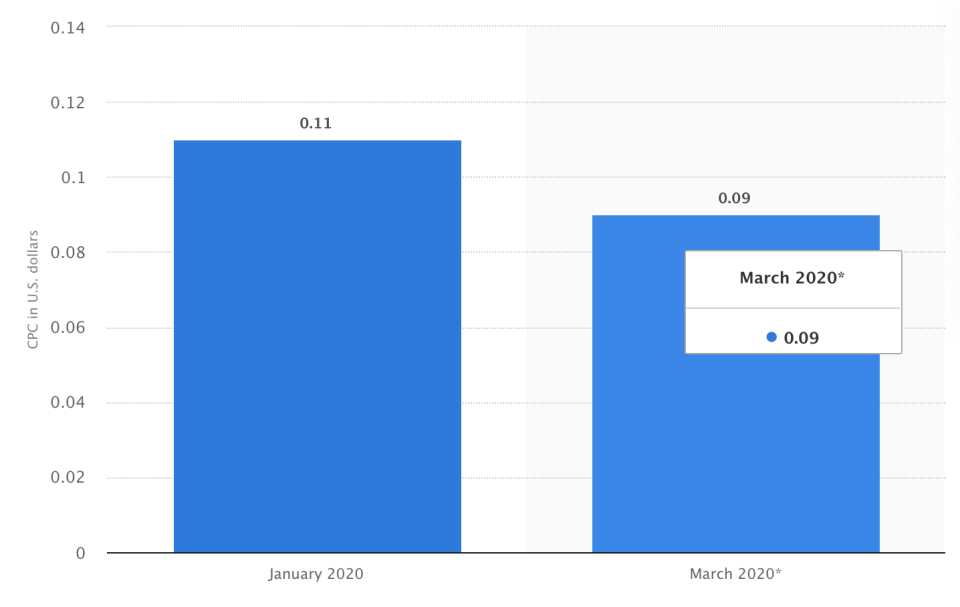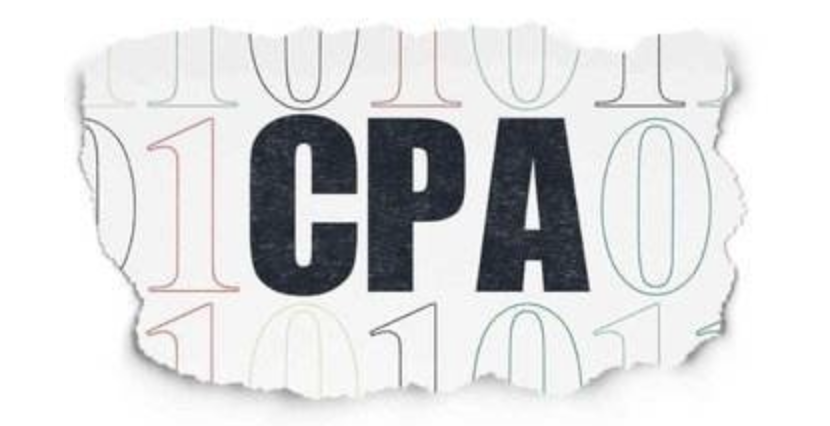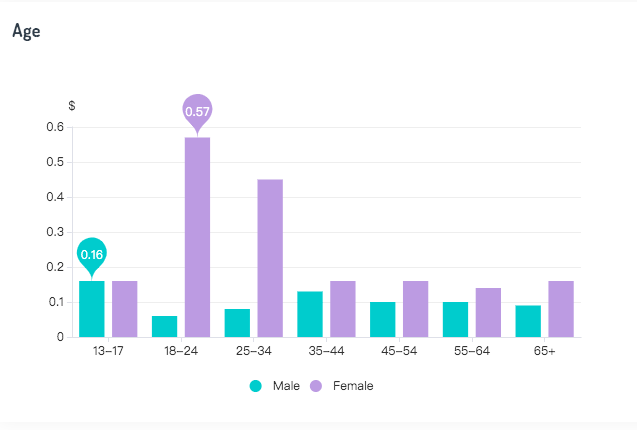Audience analysis: Using Facebook Interest keywords analysis to make a cost less ad on facebook.
Audience analysis allows brands to gain a deeper understanding of their current and potential customers to improve marketing strategy, customer experience, and brand perception. This post covers how brands can use audience analysis to create more successful marketing campaigns and advertising.
What are the 5 categories of audience analysis?
1: Situational Analysis: Considers the situation in which the audience is gathered.
2: Demographic Analysis: Things that prepare the audience.
3: Psychological Analysis: Audiences will come to a speech with already imbedded beliefs, values and attitudes.
First: Attitudes: A learned disposition to respond in a favorable or unfavorable manner with respect to a person.
Second: Beliefs: These are principles or assumptions about the universe. Beliefs are more durable than attitudes, because beliefs are hinged to ideas and not issues. Example: You may believe in the principle—“what goes around comes around” if you do—then you believe in the notion of karma and base your beliefs and align your behaviors with this philosophy.
Third: Values: Imbedded early on in our childhood, and enduring. A guiding belief that regulates our attitudes—We structure our values in accordance with our value hierarchy or mental schema placed in order of their relative individual importance. When values are tested by other values that come in direct conflicet then we have to negotiate something called cognitive dissonance. Example: Someone is presenting a speech on E-Cigarettes are good for you to smoke. You believe smoking of any kind is unhealthy for a person, you start to get this uncomfortable feeling listening to this presentation. You can barely sit through ot because your values and beliefs are so different. That feeling you are feeling is called cognitive dissonance. Values aren’t buses they are not supposed to get you anywhere. They are supposed to define who you are Jennifer Cruise.
Fourth: Muti-Cultural Analysis–Gauge your audience for their unique differences and their diversity-as a speaker be sensitive to these differing logics.
Fifth: Interest Analysis–Finding out if your audience will like your topic. You can sample your audience for a test on their topic interests.
When you want to post ads, how do you target your audience on Facebook?
1.Serve Ads to Everyone Who Has Visited Your Website Except Customers.
There are two ways to show your ad to people who have visited your sales page but haven’t purchased yet.Target Visitors Who Haven’t Completed the Checkout Process. One way is to use AdCostly and target all the people who have visited your sales website but haven’t reached the thank-you page of your checkout process. To do this, you need to set up website retargeting well in advance of when you need it. Once you install the pixel to your website, the audience starts building from that moment on.
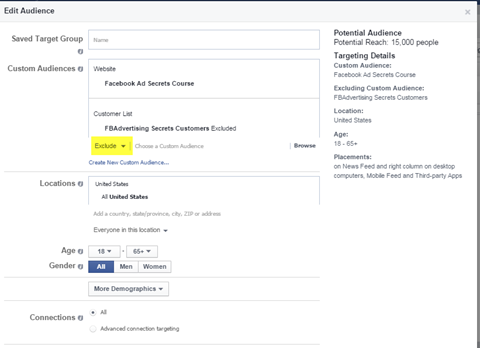
2. Reach People Similar to People Who Have Converted on an Ad.
You can create lookalike audiences from email lists you’ve uploaded and website visitors, but you can also create a lookalike audience of people who have already converted on your ads.Go to the Audiences section of the Facebook Ads Manager and select Lookalike Audience from the Create Audience drop-down menu. Then select the conversion pixel as the source. Now Facebook will put together a list of 2 million or more people who are similar to people who have already converted on your specific desired action. You can use that custom audience in your targeting area and add keywords to refine the audience further.
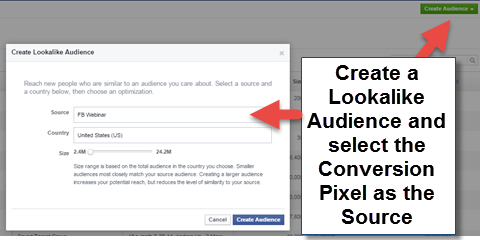
3.Target People Who Are College-Educated, Own Homes, Earn $100K or More and Are in a Certain Zip Code.
Facebook works with third-party partners such as Acxiom, Datalogix and Epsilon to tap into more targeting options with Facebook users. With this information, you can target by education level, income level, home ownership, life events, buying habits and more.
Facebook doesn’t technically “know” this information about each user, and users haven’t shared it with Facebook specifically. That data has been matched anonymously, so all you know is the size of the audience.Make sure that you don’t target an audience that is too specific. Because many Facebook users don’t login every day, targeting too narrow a group may not yield the results you’re looking for. You can access the Behaviors and More Demographics areas from either the Ads Manager or Power Editor.
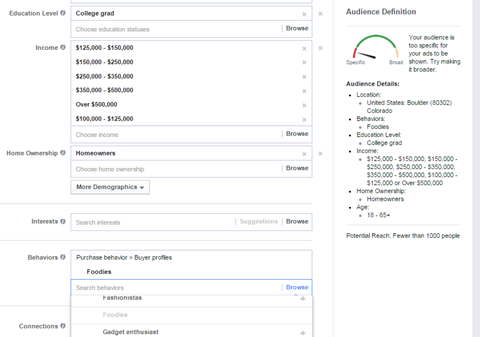
4. Show Ads to People on a Mobile Phone Within 10 Miles of Your Location.
There are a couple of ways to target people who are nearby. The first way is to use a local awareness ad, which is available in the Facebook Ads Manager. You can specifically target people who are in your area and on their phones, whether they live in your area or are just passing through.
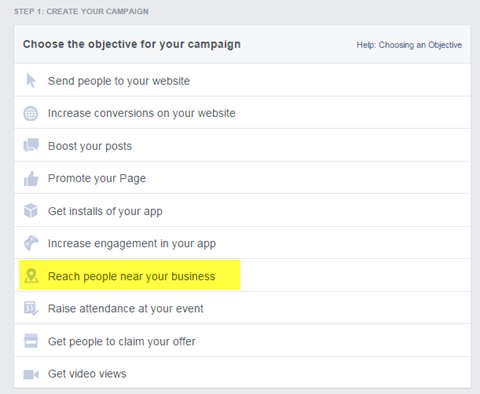
The other way to target people on their phones near your location is to enter the address of your location and make sure you have the mobile news feed enabled (which is the default setting). You can get even more specific in Power Editor by targeting only the people who are traveling through your area.
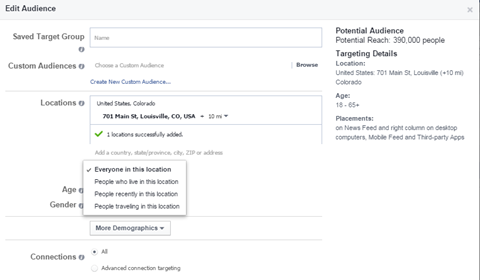
5. Focus on People in Your Target Demographic and Online at Certain Times.
Is your audience online only at night? Or at certain hours? You can specify which hours of the day your ads run (no matter which time zone) when you select Lifetime Budget in the Ad Set area. This is available either in Power Editor or in the Ads Manager.
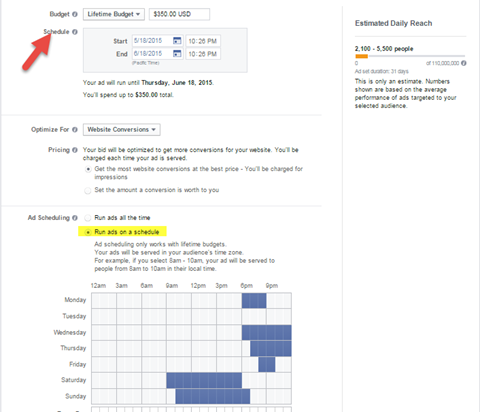
6. Display Ads to People Who Haven’t Seen Your Ad That Day.
Another thing you may be concerned about is how often your ideal customer is seeing your ad. You don’t want to bother people too much. And maybe you don’t want to spend money to show your ad again to people who didn’t click the first time that day.
You can restrict how many times a Facebook user will see your ad with the Daily Unique Reach bidding method. Select this method from either the Facebook Ads Manager or Power Editor. Make sure people only see your ad once per day by selecting the Daily Unique Reach option.
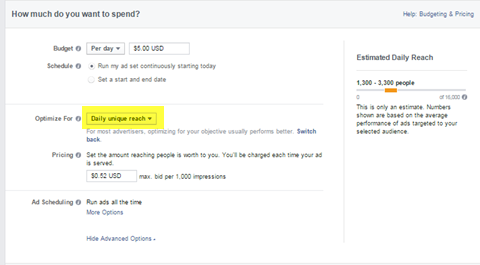
Keep in mind that this is a CPM bidding method, so you’re charged just to show your ad to people; they may or may not click on it. Also, Facebook focuses only on getting your ad in front of people who haven’t seen it before.
Those people may not tend to click on ads. However, by selecting a different Optimize For method, such as clicks or conversions, you’re still paying with the CPM method, but Facebook optimizes the ad to show it to people who are more likely to click or convert with an ad.
How to use Facebook Interest keyword to choose your ads’ audience?
As mentioned above, when you post an advertisement on Facebook, you will choose the audience of the advertisement, you can see the size of the audience, but your budget for these audiences is unclear, you do not know the CTR of these audiences, Of course, I don’t know what the CPC of this audience is. This will lead you to optimize your audience through your own experiments in advertising. If there is a cost analysis of interest words at this time, this will help you Target a better audience from the beginning, save your costs and let you make a cost less ad.
AdCostly recently launched a new module“Audience” ( cost analysis of Facebook interest words ) .
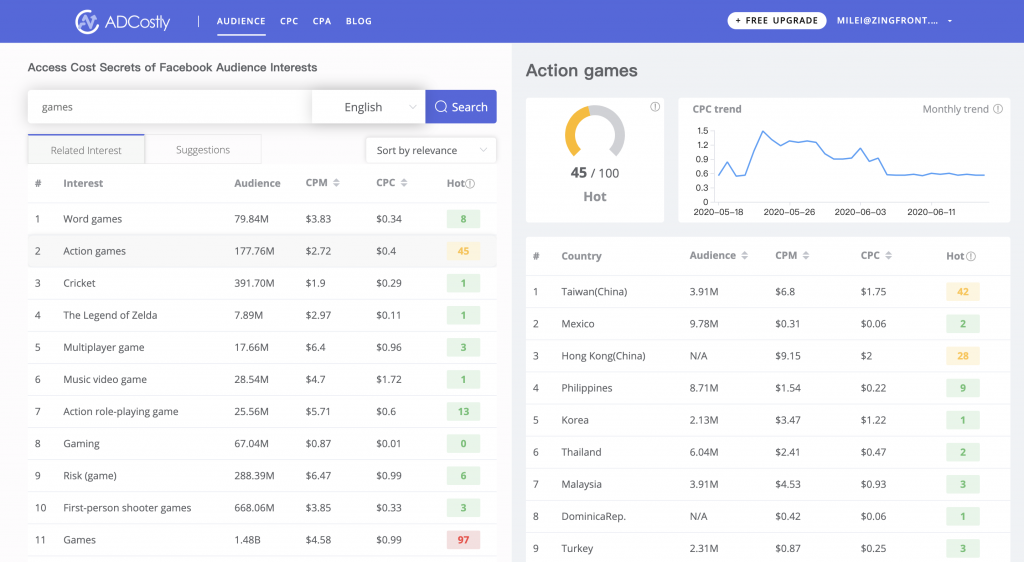
You can see every interest keywords CPM, CPC, and audience size, if you click a interest,you can see the hot, CPC recent 30 days trend, and in different conuntries’ CPC and CPM data.
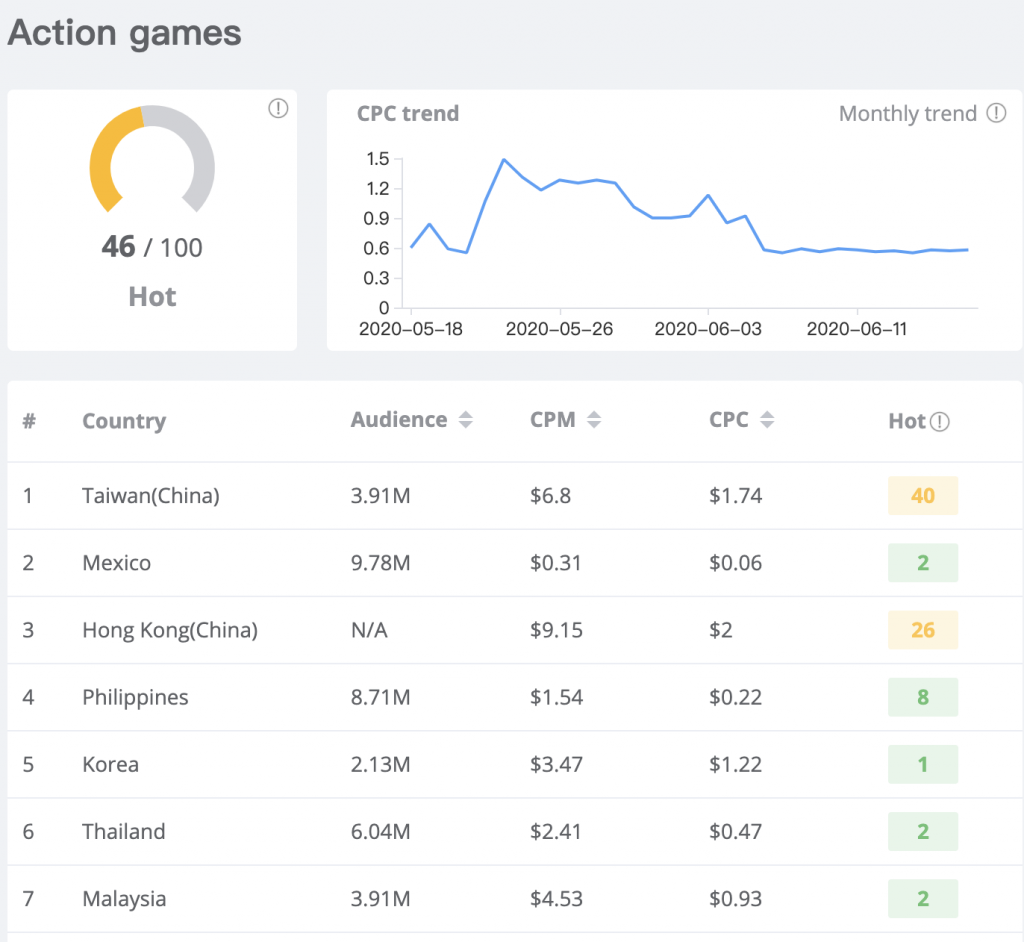
The cost analysis of Facebook interest words can help you quickly target your advertising user base, and then have a basic estimate of the cost of advertising to make your advertising effectiveness better. At the same time, AdCostly is a free tool now.
